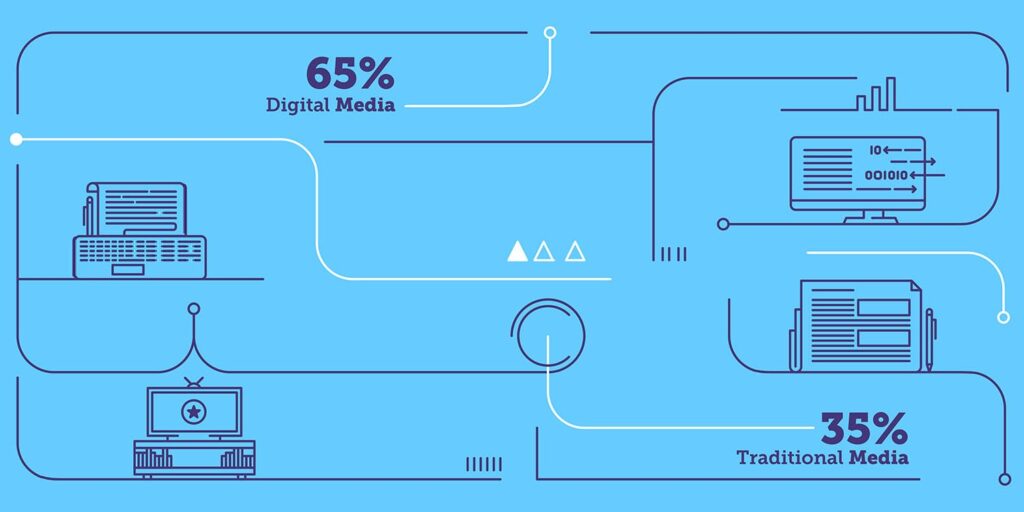As marketing professionals, we all feel the importance and demand for being able to directly track media performance. Many brands with limited budgets need to see the ROAS (return on ad spend) as data that can be tied to purchases made. In that same vein, attribution – the ability to show the effect of channels that did not have last click conversions – has become a digital component as well but may have played a role in the process to eventually get to one.
Many have come to refer to channels not directly trackable to digital activities (i.e. billboards, radio, print, direct mail, and some event sponsorship components) as “old school media.”
But don’t write it off too quickly – traditional media does have its place in the media mix. As with any strategy, each decision made has a purpose whether it’s to increase brand awareness, request different types of subscriptions, or drive leads / purchases. Of course, there are solid digital channels that accomplish these objectives, but some audiences are still better reached through traditional channels. So how do you know when it fits into the plan? Let’s explore some instances where traditional media could be a great option.
1. Audience
In cases where you are seeking the attention of professionals, billboard and radio advertising can serve as great brand awareness builders. In the U.S., working professionals spend an average of 25 minutes one-way heading to work in their vehicles. It is one place that digital is not supposed to be the primary attention grabber (although people break this rule every day). NPR, billboards, and depending on the range of your target age group, even local music or talk radio has shown success. And an added tip here – you don’t necessarily have to buy the most expensive billboard on a major freeway. Research shows more and more commuters are looking for backroads – so find a few popular alternate routes for a slightly cheaper rate.
2. Geo Target
Yes, digital advertising is everywhere. However, small towns are mostly the same as they’ve always been – tight-knit communities with key sources of trusted information. Are you opening a new brick and mortar in a small town or suburb outside of a major metro area? Consider putting up a billboard next to entrances of the largest neighborhoods. Events in smaller communities are also a great way to have face-to-face time with your potential customer and give back to the community. It’s not necessarily trackable, but we have seen it dramatically boost a client base in one weekend.
3. Added Value – Reversed
Print publications. Yes – print. These poor guys have been through the ringer over the last 15 years, but they have adapted. Before you cross print advertising off the list of possibilities, explore the packages they offer. Most will have a specific target audience that still gets the printed newspaper or magazine and a different audience that interacts more with their website, social channels, and events. It can be a good option when you need to cover a wide range of age groups – and there are cost savings when you buy packages if it suites your strategy.
4. Face to Face
Events, conferences, and community gatherings are about building relationships. This piece is even more critical in developing B2B leads. Account-based Marketing (ABM) strategies are usually a mix of face to face, direct digital interaction and nurturing. It requires a strong sales team working closely with the marketing department and both getting involved in industry events and thought leadership opportunities.
5. Attribution
The most important case to make for traditional components to a media plan is attribution. The old model that stated a consumer needs three touchpoints before remembering a brand or deciding to purchase has now actually been proven in the digital landscape. We know that multiple touchpoints have a higher influence than just one. So even if you cannot credit that billboard, radio spot, or print ad to a direct purchase or lead, you could make the argument that it had an impact earlier in their journey.
As an agency, Workhorse has seen that the best performance is attained when layering both digital and traditional with specific strategies and balancing the budget accordingly. So don’t dismiss traditional advertising the next time you are in planning mode. It could be the added boost that your client or brand needs to see an increase in revenue.

